A new book on the early history of recreational vehicles from around the world has just been published. It features a chapter on New Zealand illustrated in part with photos submitted by NZMCA members. Author Andrew Woodmansey explains how the RV hobby took off at a very early stage in New Zealand.
New Zealand was an early adopter of the RV. New Zealanders have always been receptive to new ideas from overseas and were quick not only to spot the leisure potential of this new hobby, but also to adapt recreational vehicles to local conditions.
International tourism to New Zealand received a boost when the Suez Canal opened in 1869, shortening steamship journey times to New Zealand considerably. A few wealthy tourists brought horse-drawn wagons with them to tour New Zealand or had a wagon made locally. Overseas hunters and fishermen were especially attracted to the country by reports of its unspoiled landscapes and natural bounty.
Permanent settlers in New Zealand also played an important role in the establishment of a local RV industry. Farmers converted shepherd’s huts and living vans to mobile recreational use or left them in a favourite holiday spot, in doing so creating the forerunner of the bach. Roving pastors used ‘bible vans’ to preach the gospel in remote areas, including George Brown of Auckland and his wonderfully named Conditional Immortality Caravan of 1882.
Stories of the exploits of Scotsman Dr Gordon Stables in his Wanderer of 1885 and the ‘gentlemen gypsy’ movement of the UK reached New Zealand in the late nineteenth century, prompting a few more adventurous New Zealanders to explore the country in a horse-drawn wagon.
The first-known record of a horse-drawn vehicle purpose-built for leisure in New Zealand appears in 1889. Made by Rangiora coachbuilders Reeves and Son for G. Palmer-Chapman, a former planter from Cust in North Canterbury, the caravan was a modest 6ft wide by 6ft long and 6ft high. However it must have had stability problems since on one of its first trips it overturned completely in a riverbed near the Hanmer Plains Hot Springs.
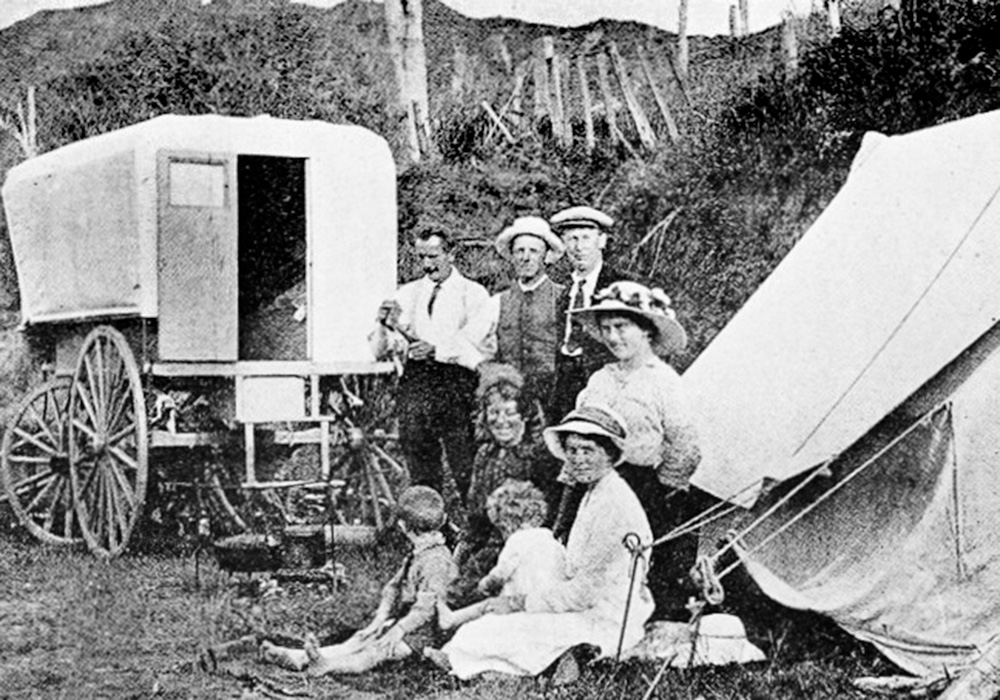
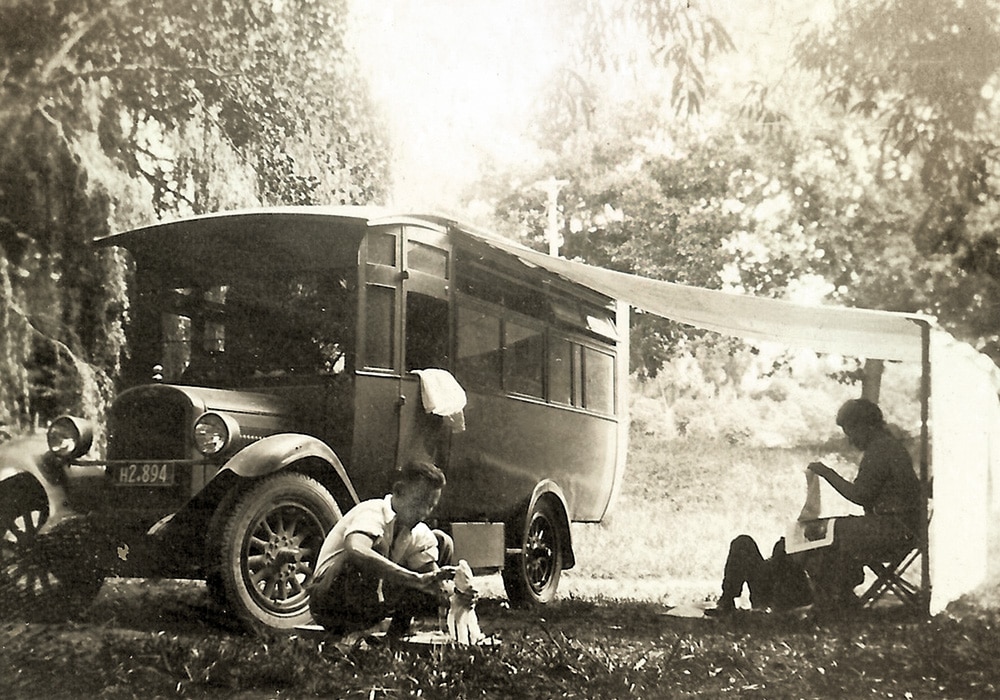
Hunting and fishing play an important role in the development of early recreational caravanning in New Zealand. According to newspaper reports in 1892 a fisherman called Mr Hayhurst erected a ‘commodious house on wheels’ at Rangitata, ‘so that camping is robbed of its inconveniences’. In 1900 a Mr Clark of Waimate owned ‘a capital travelling house on wheels, fitted with bunks, cooking stove and every convenience’ for use on his fishing excursions. Later, in 1904, an 8ft-long recreational caravan was built for Australian fisherman and deer hunter Gordon Shaw.
The most interesting design feature of these early horse-drawn recreational vehicles is that they were short and tall. Although this may have created some early stability problems, it seems the narrow and winding roads of New Zealand played a key part in RV design. The early wagons were short enough to navigate sharp bends but still tall enough to stand up in. In 1908 we start to see the impact of motorised transport on camping in New Zealand. Two months into their journey from Auckland to Wellington, English tourists Captain Hope-Johnstone and Mr Earle abandoned their horse-drawn caravan for a ’43 horse-power automobile’ at Rotorua. The tourists found the road conditions ‘too appalling to describe’ to continue their journey with an uncomfortable caravan. Over time, poor and narrow roads also led to a perception that motor caravans were generally better at managing these conditions than a trailer towed behind an automobile.
Prior to the First World War, the ‘picnic habit’ was popular among city residents who ventured out for the day or weekend to a local beach or river. Fishing, sightseeing and health-seeking tours were arranged by local transport companies using a horse-drawn caravan, tents and riding horses. Caravan holidays were particularly popular in the Canterbury district of the South Island due to generally better roads. In 1911 one walker who hiked between Dunedin and Christchurch met five caravans in four nights and determined that caravans had consequently become very popular.
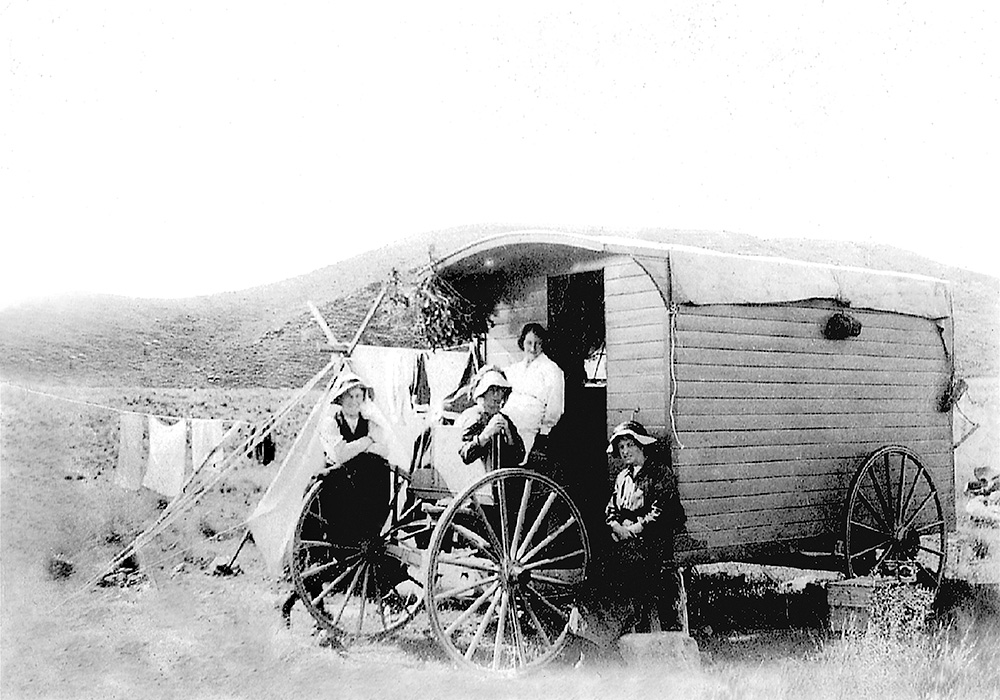
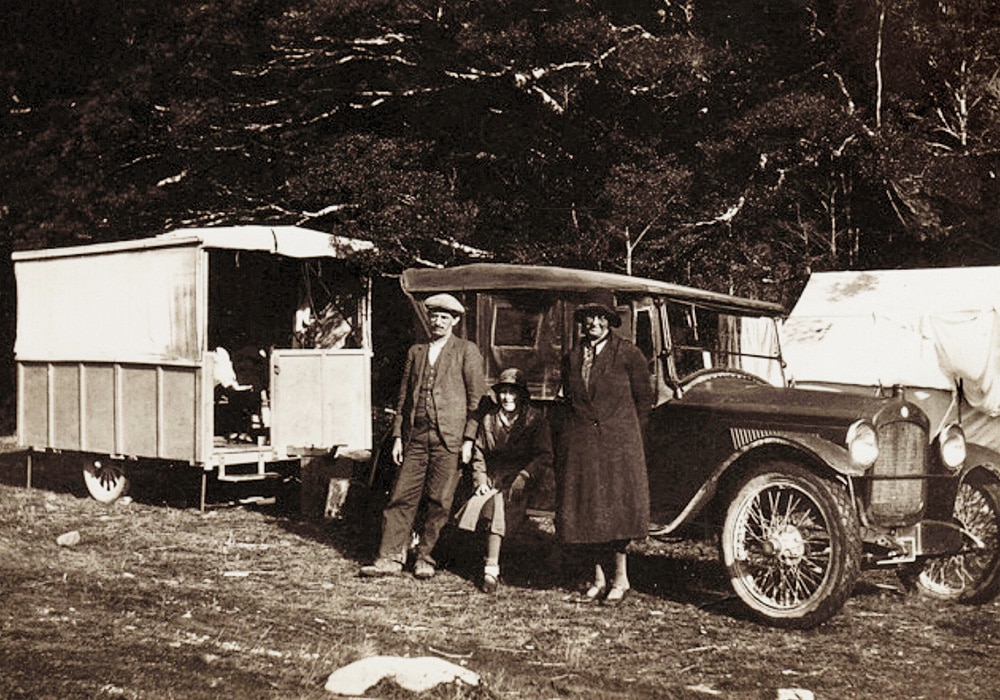
Between 1920 and 1930, leisure travellers moved away from horse-drawn caravans to ‘auto camping’, where standalone tents would be packed into automobiles. As roads improved and council-run ‘motor camps’ were introduced, auto camping was replaced by motorhomes and trailer caravans. One of the earliest motorhomes belonged to W.H. Gibson, an Auckland novelty jeweller. His 1924 Dodge Brothers motorhome looked rather austere, suggesting it may have been a converted delivery van.
An important figure in the early days of New Zealand’s motorised RV history was motor body builder H. Parker of Dunedin. In 1926 Parker developed ‘Parker’s Extending Motor Caravan’, described as ‘a safe, comfortable and movable crib on wheels’. In 1931 Parker moved into the camper trailer market, patenting a collapsible trailer called the ‘Parkerbilt Folding Trailer Caravan’. When folded it was only 3ft 6in high, increasing to 7ft 10in when raised. Parker’s camper trailer was probably the first RV to be fully built in New Zealand.
Camper trailers were popular with hardy campers but less so with the ‘picnickers’. Casual campers wanted more protection from New Zealand’s variable weather, leading to the introduction of fully-enclosed caravans. The first locally-built motor-drawn caravans were self-built and began to appear in the mid-1920s. Probably the first to be manufactured commercially in limited numbers was the Davey Trailer Caravan, made by Charles Davey of Auckland in 1931. In the early 1930s other small-scale builders tried their hand at caravan building, such as the Bunnythorpe Garage in Palmerston North which built small caravans to its own design.
Perhaps the best-known New Zealand caravan manufacturer of the 1930s was Auckland-based Tanner Trailers. In 1936 the company advertised for sale or hire its own 13ft Tourist 4-berth Special, an oval-shaped, full-height caravan. By 1937, Tanner Trailers were building a range of six oval-shaped caravans from 9ft to 15ft long. Tanners continued to build caravans into the 1950s.


A joint venture between Christchurch engineer J.E. Moore and Schult Trailers of the USA produced over 100 caravans in 1939 alone. Other small-scale commercial caravan builders of the late 1930s included Andersons Motor Body Works (Dunedin), The New Zealand Trailer and Caravan Company (Auckland), H.V. Hayman’s Stowaway Caravan Trailer (Birkenhead) and Runlite (Dunedin). An example of the ingenious Stowaway Caravan Trailer is included in the collection of the Museum of Transport and Technology (‘MOTAT’) in Auckland.
Caravan clubs played an important role in popularising the RV lifestyle, with the first New Zealand caravan club formed in 1933 in Cambridge. By 1939 it was estimated that there were more than 9,000 caravan registrations in New Zealand, with Christchurch and Auckland having the largest number.
By the start of the Second World War, both motorhomes and caravans had become common sights on New Zealand’s roads. The RV holiday had evolved into one of the most popular recreational activities in the nation for Kiwis and visitors alike. Although early New Zealand RV design was not revolutionary, it was pragmatic, cost-effective and enduring. Most importantly, being short and lightweight, locally built RVs were admirably suited to local conditions.
In recognition of their significance, a 1937 self-built caravan forms part of the collection of the Museum of New Zealand, Te Papa Tongarewa, in Wellington.

About the Author
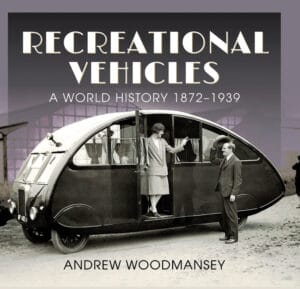 Andrew Woodmansey is an RV historian and writer. He wrote the Caravan Buyers Guide in 2014 and has written the first international history of the RV called Recreational Vehicles: A World History 1872-1939 (RRP $91), published by Pen & Sword and illustrated with 250 period illustrations, available from Mighty Ape and bookshops. Andrew writes from his Sydney home and from his camper trailer while exploring Australia’s beaches and outback.
Andrew Woodmansey is an RV historian and writer. He wrote the Caravan Buyers Guide in 2014 and has written the first international history of the RV called Recreational Vehicles: A World History 1872-1939 (RRP $91), published by Pen & Sword and illustrated with 250 period illustrations, available from Mighty Ape and bookshops. Andrew writes from his Sydney home and from his camper trailer while exploring Australia’s beaches and outback.
Andrew also has a blog on early RVs from around the world at rvhistory.com.
Feature image: A meeting of the Cambridge Caravan Club in 1936 (courtesy Auckland Libraries Heritage Collections).
Looking for motorhomes or caravans for sale in NZ? Browse our latest listings here.






